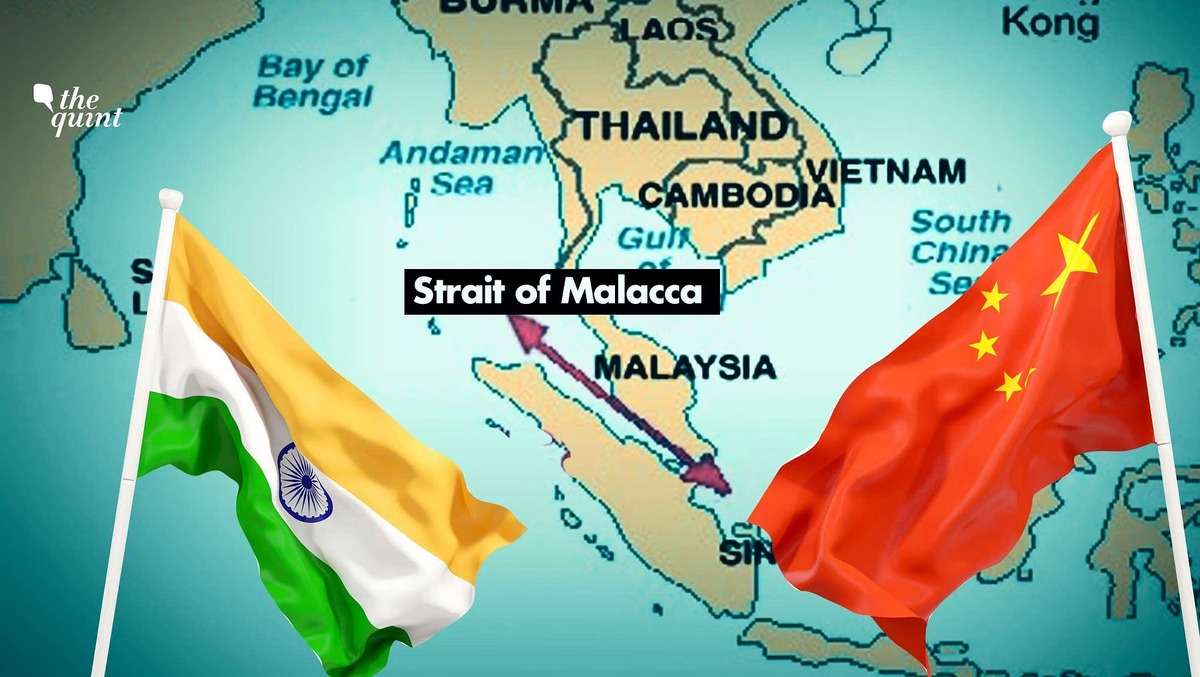Context:
There are limitations to what India can do in the event of a U.S.-China conflict over Taiwan.
Introduction:
With China frequently intimidating Taiwan over the past year through deployment of its air force and navy in the surrounding areas, there is the oft-posed question whether India would take action in the Strait of Malacca or the Andaman Sea in the event of a conflict between the United States and China over Taiwan.
Any speculative action in the Strait of Malacca or the Andaman Sea would involve either a naval blockade against commercial shipping or China’s key trade and energy sea lines of communication or military action against Chinese naval vessels.
Constraints in regard to India’s options in the Strait of Malacca
- First, “distant blockades” away from a belligerent nation’s geography can be challenged under international law.
- Second, the trade that passes through the Strait of Malacca is not just China’s economic and energy lifeline. An overwhelming volume of the trade of Japan, South Korea and even India itself passes through the same Strait.
- Third, the channel of the Strait of Malacca is long, nearly 500 miles, and involves the sovereignty of other states such as Indonesia, Malaysia, Thailand and Singapore who would all be affected adversely by a naval blockade. The affected countries are unlikely to support a naval blockade.
- Fourth, commercial shipping is extremely complex to identify in terms of the sovereignty of the vessel, flag, registration, insurance and ownership of cargo. And these are often multinational in nature and can also be changed as convenient through transshipment at any port in Southeast Asia.
- Fifth, apart from the fact that it is difficult to interdict China’s trade and energy supplies, the additional reality is that even if the Strait of Malacca were “choked”, shipping can take a detour either through the Sunda or the Lombok Straits to reach China.
- Sixth, China also has a huge onshore and floating Strategic Petroleum Reserves (SPR) which can help it tide over disruptions, especially with growing overland energy supplies from Russia and Central Asia.
Consequences of Naval blockade:
- A naval blockade or unilateral action against an adversary’s naval vessels would tantamount to a declaration of war; at the very minimum, it could lead to a conflict, not necessarily limited to the maritime sphere.
- Regional countries which are adversely affected by disruption in the Strait of Malacca, including friendly countries, are unlikely to endorse any unilateral action. China would use its permanent seat in the United Nations Security Council and regional influence to good effect to thwart any such effort.
Past Learnings:
- It is also relevant to note that in both the First and the Second World wars, a naval blockade and sanctions led to conflagrations.
- During the First World War, the British blockade of Germany which lasted from 1914-19 saw Germany retaliating against British shipping on the high seas with its submarines (U-boats) with deadly effect.
- Subsequent developments, including the Battle of Jutland in 1916 and the sinking of U.S. merchant vessels by German U-boats eventually drew the U.S. into the First World War.
- During the Second World War, the U.S. had embargoed Japan’s energy supplies which ran through the maritime commons, which probably played a key role in Japan’s decision to launch the attack on Pearl Harbour in December 1941.
Different conflict scenarios:
The larger question in the context of the Strait of Malacca that remains to be answered is whether any of India’s strategic partners, especially the U.S., would support any interdiction of Chinese vessels in a bilateral conflict between India and China, unless the U.S. itself were involved in a kinetic conflict with China. Even in such a scenario, there is perhaps no guarantee of support by other stakeholders in the region, especially the South-East Asian nations.
What India needs to do?
To the extent that a full-blown U.S.-China conflict over Taiwan sends ripples across the Indian Ocean, India’s primary role may be limited to a proactive defence of its territorial interests and the security of its sea lines of communication and those of its strategic partners in the eastern and western India Ocean. In any such eventuality, India’s primary focus would remain on its continental borders with China.
Conclusion:
India has traditionally faced China’s military threats on its borders essentially on its own. The new U.S.-India partnership in the economic, high-tech and military areas is expected to strengthen in the years ahead. The U.S. increasingly regards India as regional ballast for stability in the region. A robust India with a strong economy, nuclear deterrence capability and a credible military can contribute to multi-polarity in the Indo-Pacific.

.jpg)


Comments (0)